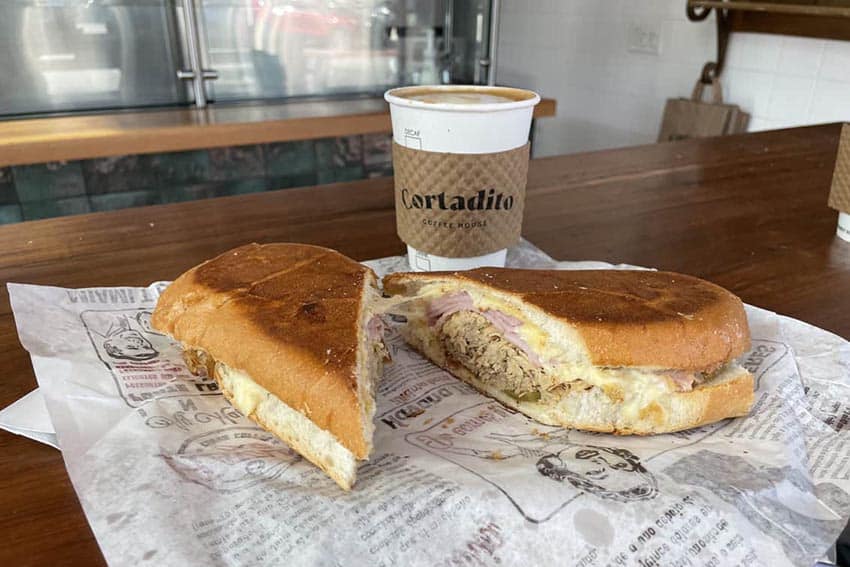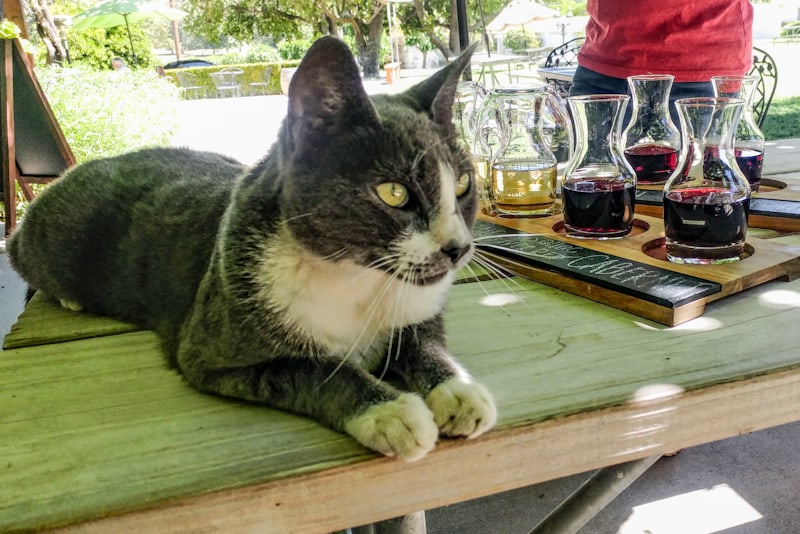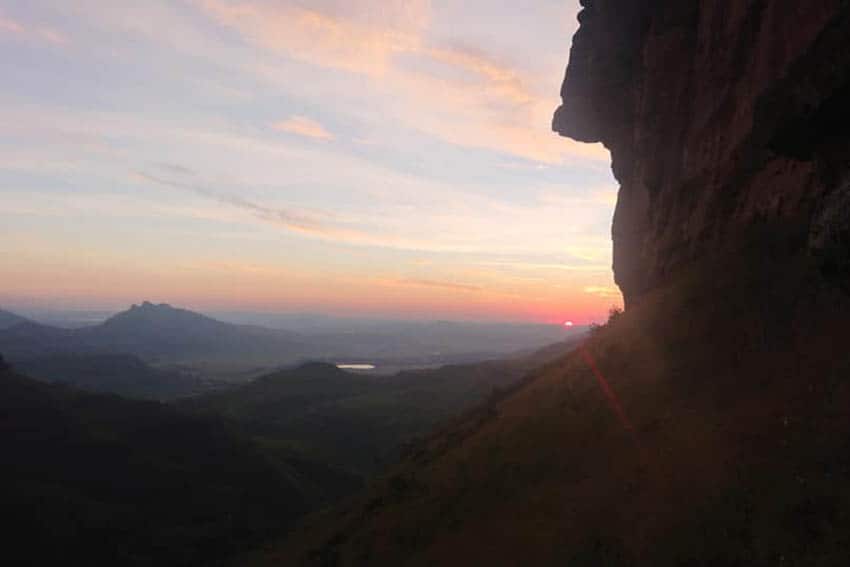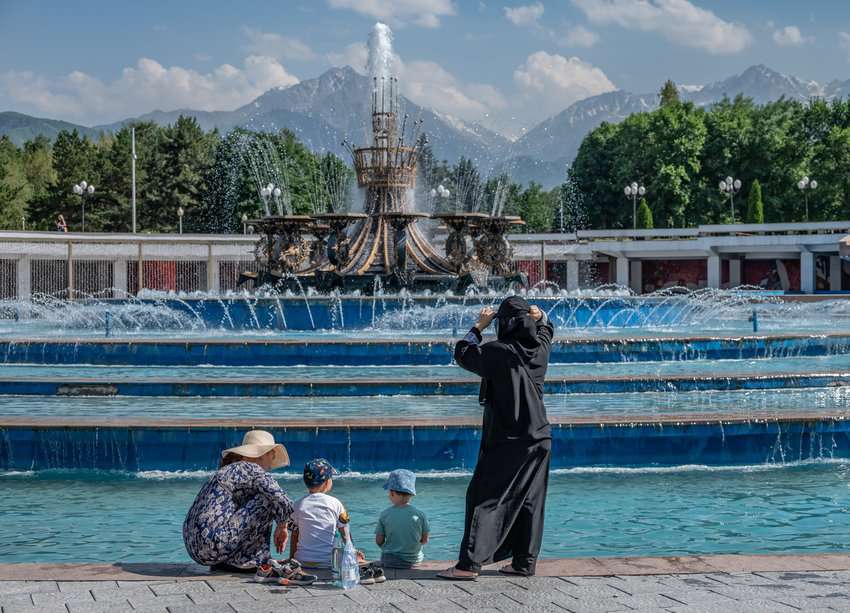
A Delicacy in Kazakhstan – Horse, of Course!
By Donnie Sexton
GoNOMAD Senior Writer
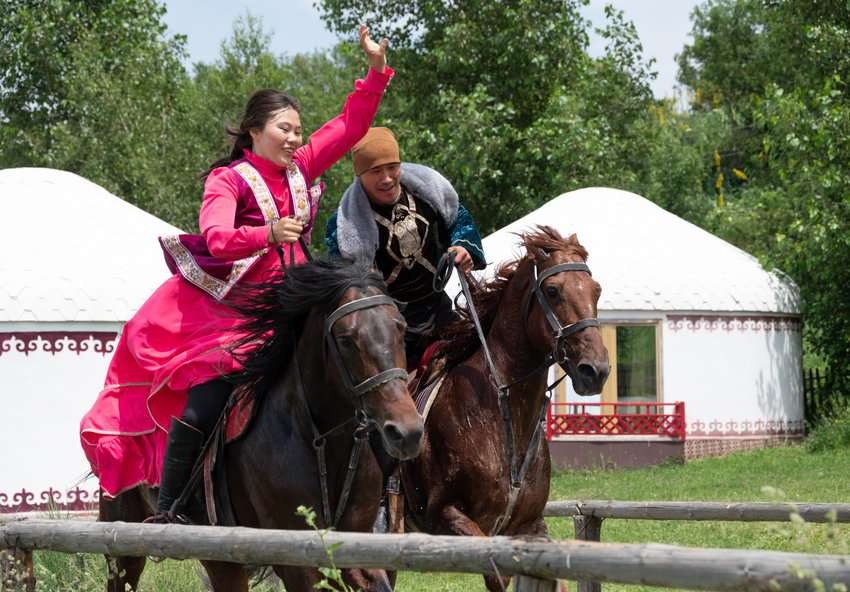
I never dreamed I would set foot in Kazakhstan.
When I was invited to join seven journalists on a trip to the city of Almaty, Kazakhstan, I had to look at a map to see where the heck I was going. I discovered that Kazakhstan is the largest country in Central Asia, bordered on the north by Russia, on the east by China, and the south by Kyrgyzstan.
In 1936, Kazakhstan became a Soviet socialist republic but gained its freedom from Russia In December 1991. The influence of 70 years under Russian rule remains very evident today.
Locals speak Russian and Kazakh, with very few speaking English. Most signage is written in Cyrillic script, which I found impossible to decipher.
What the Kazakhs have going for them is an abundance of kindness and genuine hospitality shown thru gestures and smiles in an attempt to communicate with visitors.
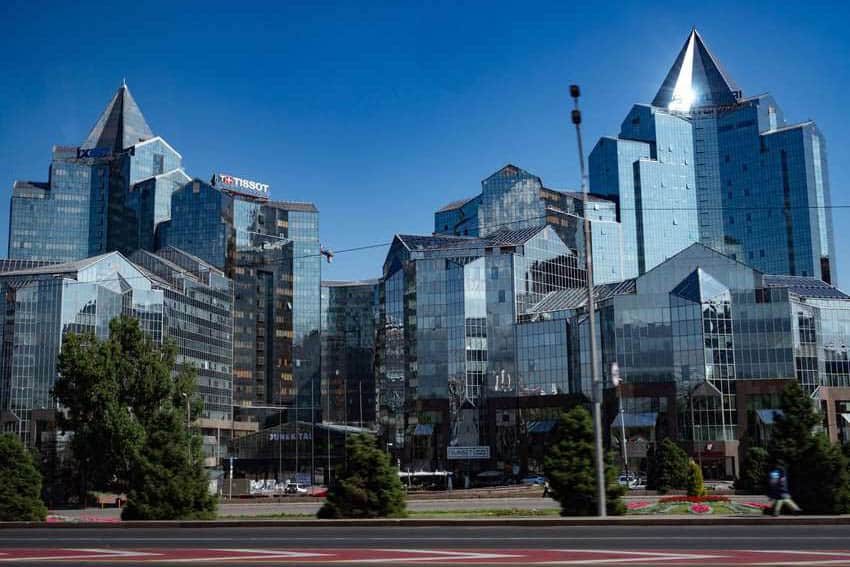
Twenty-hour Plane Ride
After a painfully long plane ride from Los Angeles to Almaty (20+ hrs. with a layover in Istanbul), I arrived bleary-eyed but ready to explore. Our gracious hosts, Ainur and Alexandr, whisked us off to the beautiful upscale Rabat Palace Hotel to refresh, then it was off to the famed Green Market.
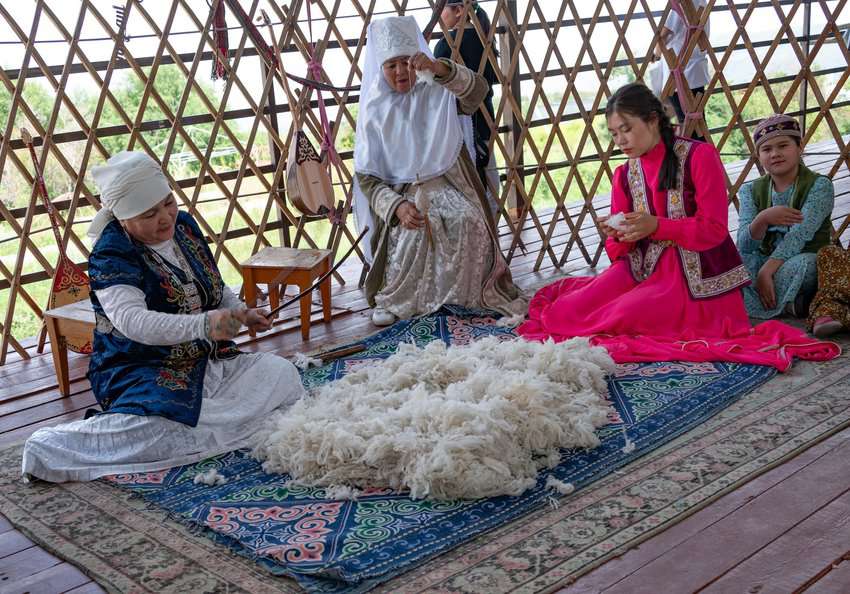
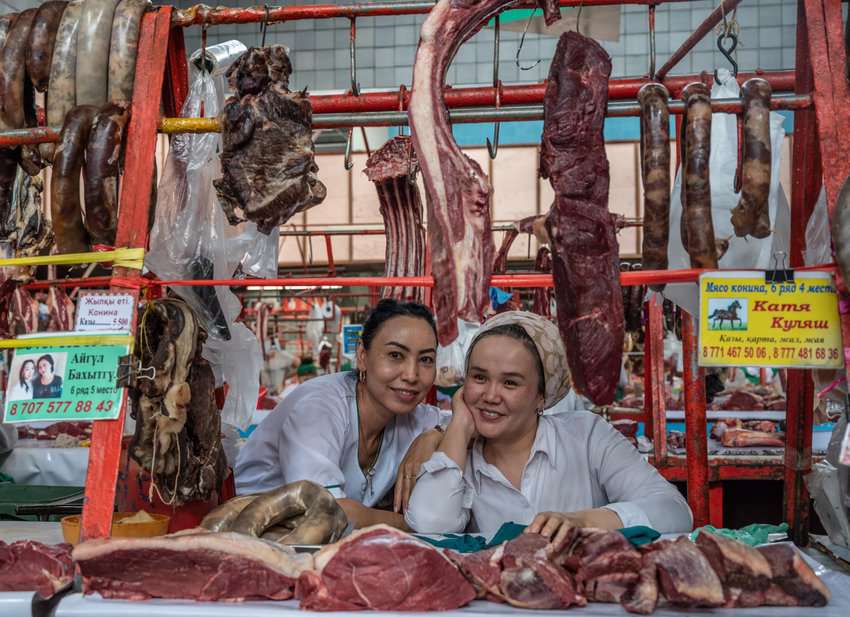
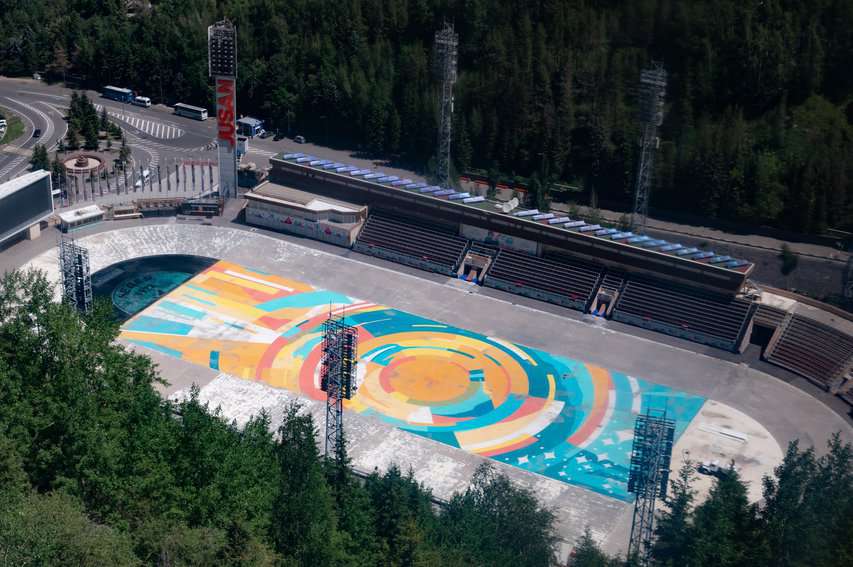
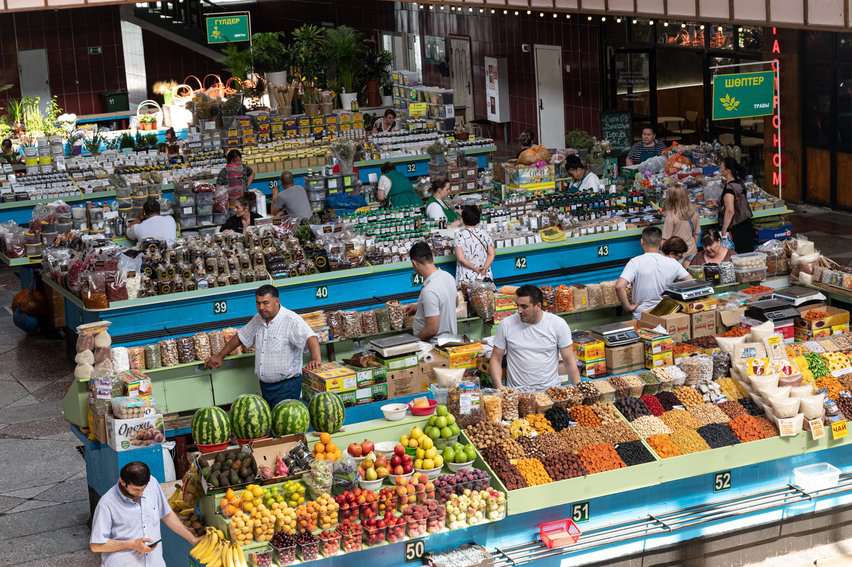
This warehouse-like market, built in the 1970s, is a must-stop for any visitor to Almaty, filled with stands of fruits, vegetables, spices, nuts, cheese, yogurts, and sweets. One section was devoted to processed meats and sausages – horse, lamb, camel, and beef. The vendors were eager to hand out samples of horse and camel sausage. Then came row upon row of horse meat, red and raw.
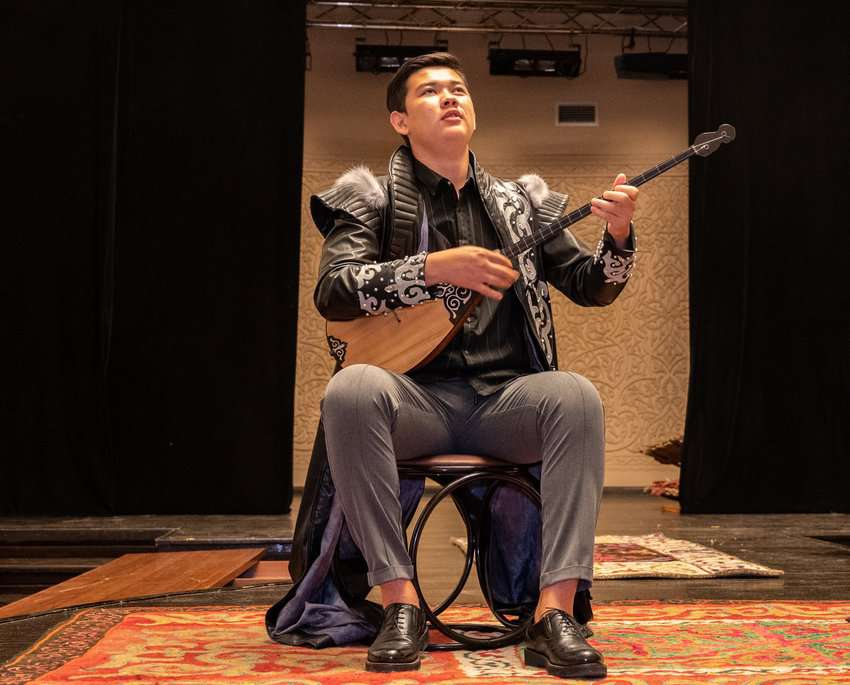
Every imaginable cut of horse meat filled the tables – from legs to organs to roasts to innards. Other sections featured sheep and beef meat, again with every imaginable part of the animals for sale.
Our guides informed us that horse meat considered a delicacy in Kazakhstan, came from horses raised for food/slaughter, not a family’s pet. That’s reassuring!
Qaimaq Restaurant for Horse
Afterward, we were off to the beautiful Qaimaq Restaurant for dinner. The life-sized statue of the horse at the entrance should have been my first clue that horse would be on the menu.
Horse meat reigned supreme! Everything from plates of processed horse meat to Kuyrdak, a traditional Kazakh stew with chunks of horse meat, onions, peppers, and potatoes, filled the table. The best I could do was a tiny nibble of Kuyrdak and a spoonful of horse broth.
This horse meat business reflects the nomadic culture of the Kazakhs, who, in former times, lived as herders moving with the animals and seasons across the great steppes of Asia. When the people came under Soviet rule, they were forced into settling and would eventually develop urbanized centers such as Almaty.
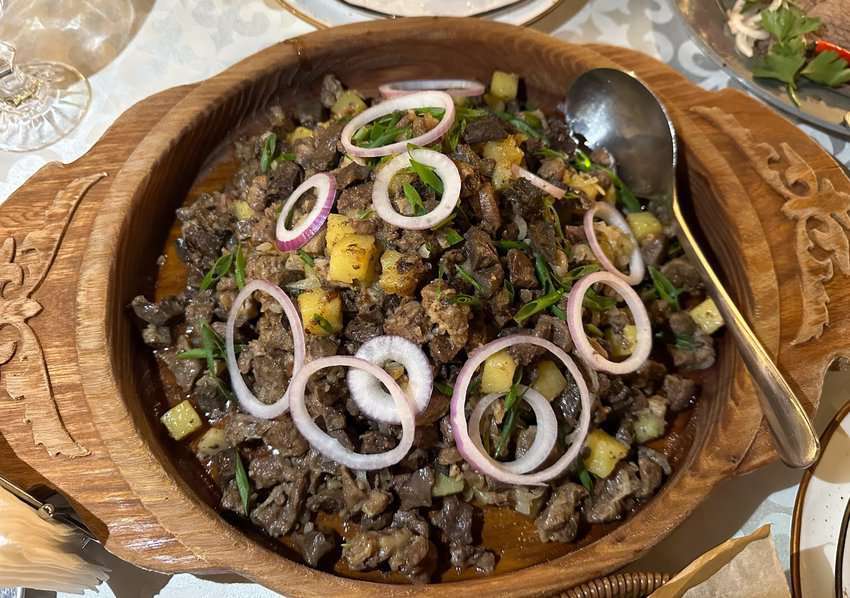
Almaty has grown into a cosmopolitan city, recognized as a financial, scientific, cultural, historical, and industrial center for the country. The shopping, dining choices, cultural events, and museums rival any sophisticated city worldwide. Almaty prides itself on its abundance of public green space, including walking and biking trails and sizable parks with elaborate fountains.
Culture in Almaty
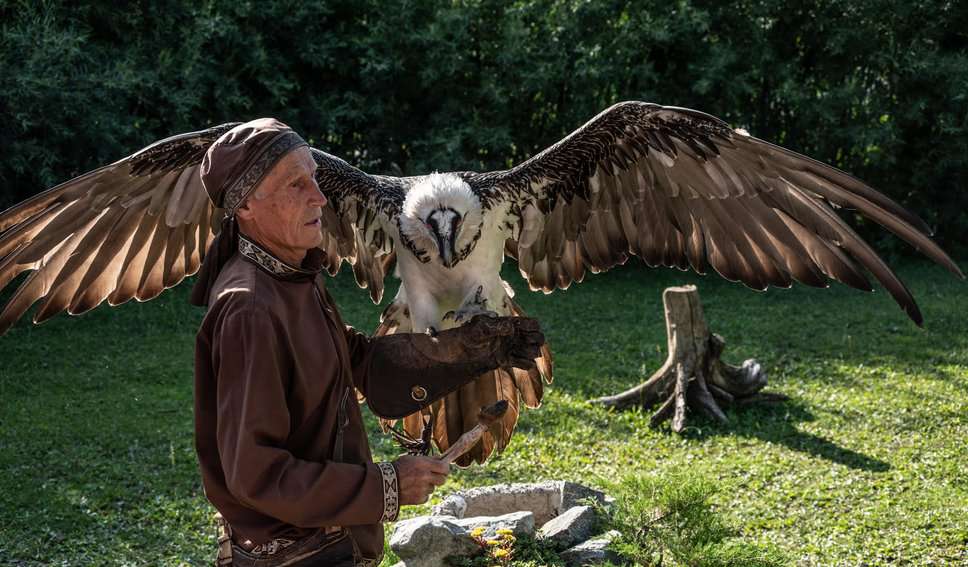
Over the course of four days, we explored the culture institutions and outdoor activities in and around Almaty. A trip to the Museum of Folk Musical Instruments, Central State Museum, and the A. Kasteyev State Museum of the Arts gave us a well-rounded view of how this central Asia country has developed.
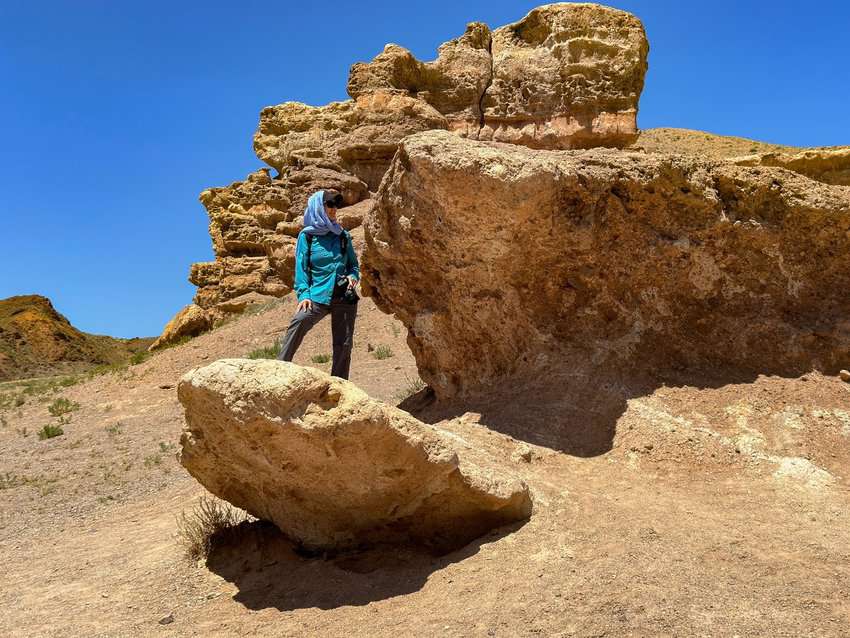
We took the cable car up to the Shymbulak Mountain Resort, a lively ski area in winter. On the ride up, we could see Medeu, a high-altitude sports complex considered the world’s largest high-mountain skating rink, and a source of great pride for Almaty.
To better understand the Kazakhstan culture, we spent time at The Huns’ Ethno-village, where we experienced a day in the life of Kazakh nomads. Demonstrations of cooking, spinning yarn, grinding flour, a folkloric show with music, horse games, and a chance to try our hand at archery left us appreciating this ancient way of living.
Life Inside a Yurt
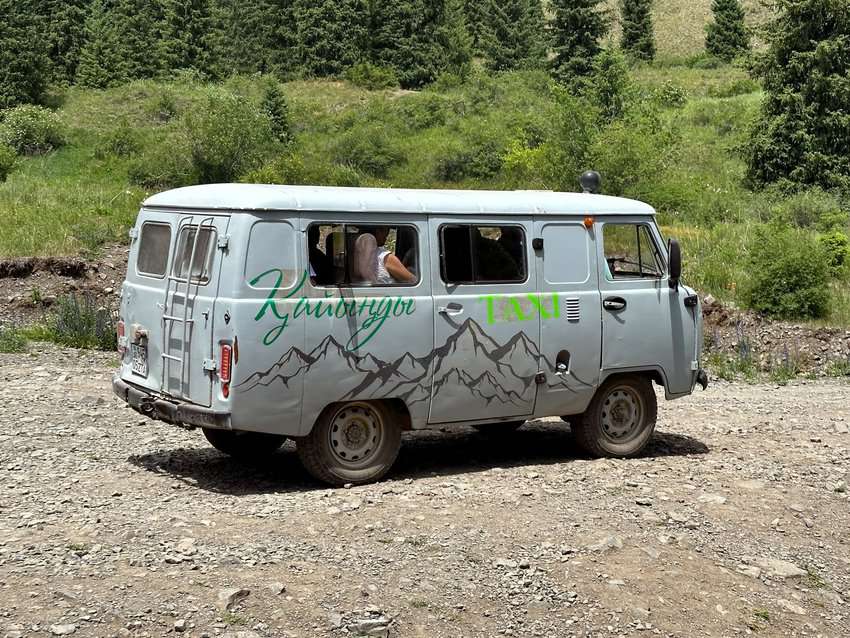
We were given a detailed explanation of life inside a traditional yurt, reminding me how grateful I am to have a house with four walls, individual rooms, and indoor plumbing.
Part of this nomadic culture across the Eurasian steppes was the practice of keeping, training, and flying falcons and other birds of prey to hunt wild animals. Historians tell us this method of hunting is at least 900 years old. At the Sunkar Falconry Center on the outskirts of Almaty, we witnessed demonstrations of how falcons are trained by noted ornithologist Pavel Pfander. The center breeds critically endangered birds of prey, such as Saker falcons and golden eagles, and releases them into the wild.
Drive to Charyn Canyon
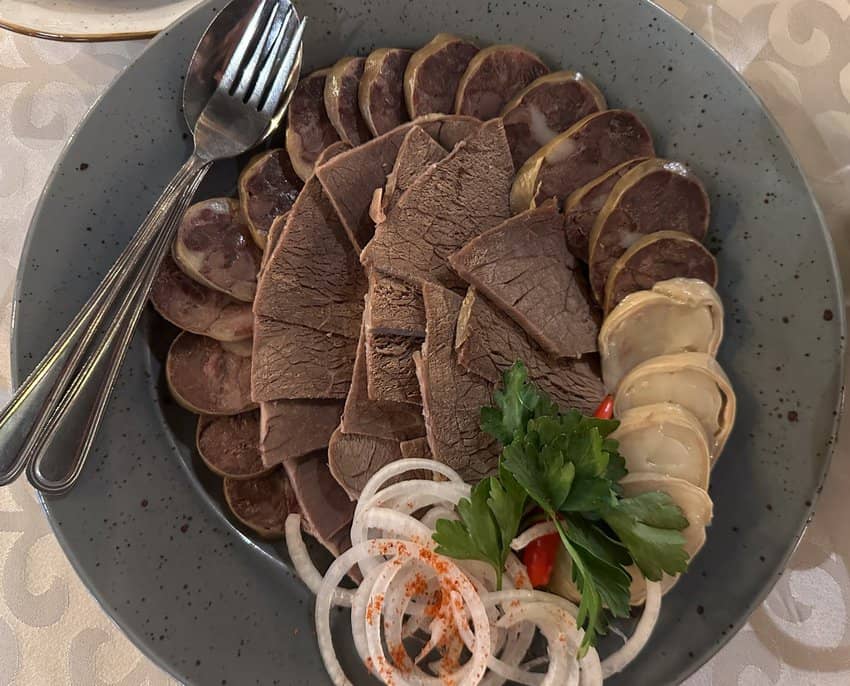
Our exploration of the Almaty region took us out of the city on a three-hour drive to Charyn Canyon, part of Qazaq National Parks. The locals suggested it’s similar to our Grand Canyon but on a much smaller scale. A one-hour easy walk through the bottom of the Canyon afforded views of unique rock formations.
Afterwards, we lunched at the trendy Charyn on-site restaurant, where horse was on the menu once again. I started to think horse meat wasn’t a delicacy, but rather a staple in Kazakhstan.
We spent the night in the small village of Saty at the Alban Guest House. The locals have crafted a sustainable business offering homestays to supplement their income. Staying in Saty makes it very convenient for travelers who wish to explore Charyn Canyon and the nearby high-altitude Kolsay and Kaiyndy lake regions.
The homestay was lovely, with the woman of the house, Gulsara, speaking only in Russian, demonstrated how to make a Zhent, a sweet ball of goodness made from millet, butter, sugar, and poppyseed. Gulsara prepared dinner, starting with a green salad using tomatoes and cucumbers fresh from her garden and tasty homemade dumplings. I didn’t dare ask what the filling was! Then came a big platter of horse short ribs and potatoes!
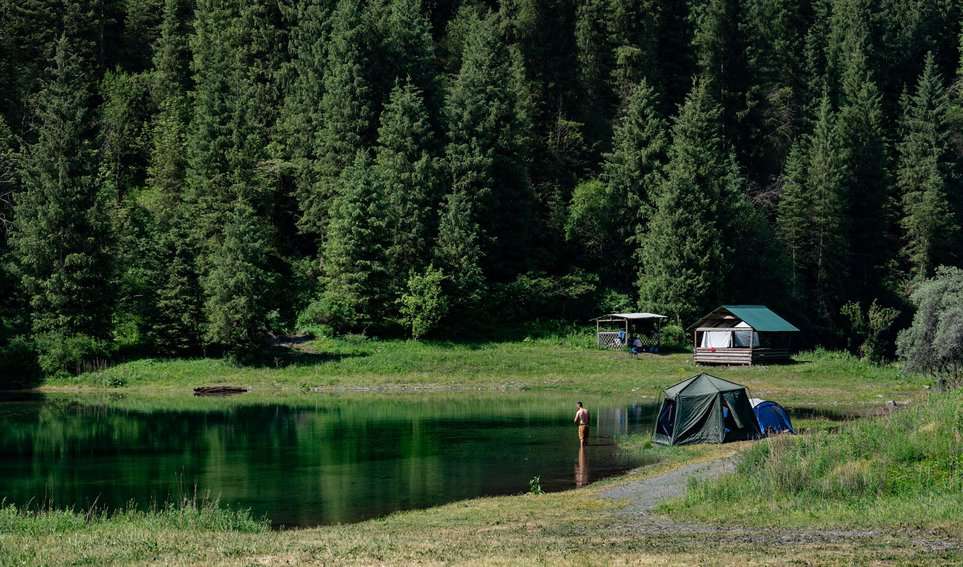
The following day we motored up to the Kaiyndy Lake area. Getting there required a ride in a Soviet-era VW bus that spewed and spit gas and fumes for the 30-minute jarring ride on rough gravel roads. As we bounced up the mountain, the peaceful landscape covered with pine forests and wildflowers reminded me of my home, Montana.
Where the trail to the lake started, and we said good riddance to our VW bus, there were two small lakes with a handful of people camping and a small shack for snacks and drinks. Here, our guide ordered fermented horse milk, served lukewarm, where I timidly tried a thimble full. The word gross comes to mind!
Kazakhstan isn’t for the traveler who is chomping at the bit to leave the US and discover the world yet hasn’t seen the Eiffel Tower, the pyramids of Egypt, or the wonders of Machu Picchu. It’s for the seasoned traveler who has done it all and is looking for an adventure way off the beaten path.
Kazakhstan is keen on putting itself on the map as a must-see destination, showing off the best of its outdoor offerings, and presenting intriguing history lessons into its nomadic culture. You will find the locals charming. If you have an adventurous side, especially regarding food (sad to say I don’t), then Kazakhstan, with its penchant for eating horse, should be on your bucket list.
Take the Train: Rail Passes Around the World
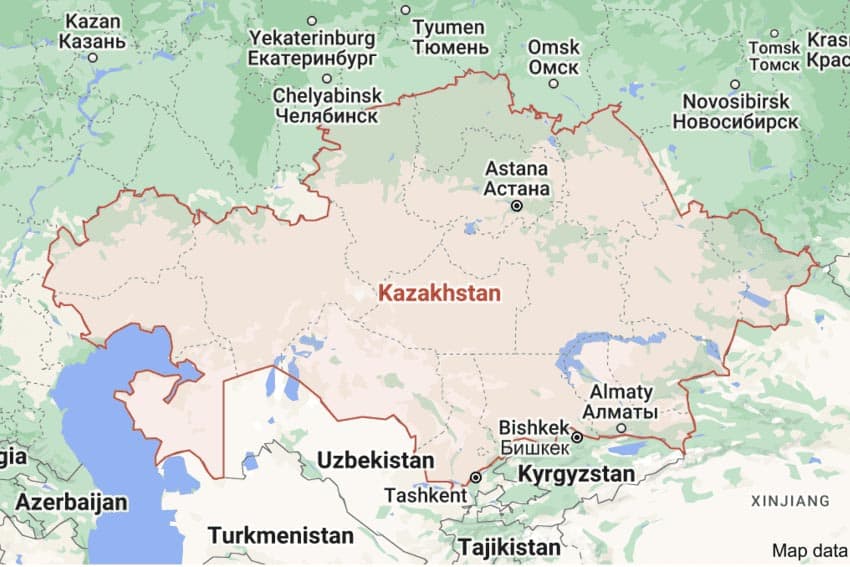
- Hands That Tell a Story - April 30, 2024
- Butte, Montana: Home to the Richest Hill on Earth - April 6, 2024
- Spain’s Extremadura: History and Famous Pigs - December 20, 2023


